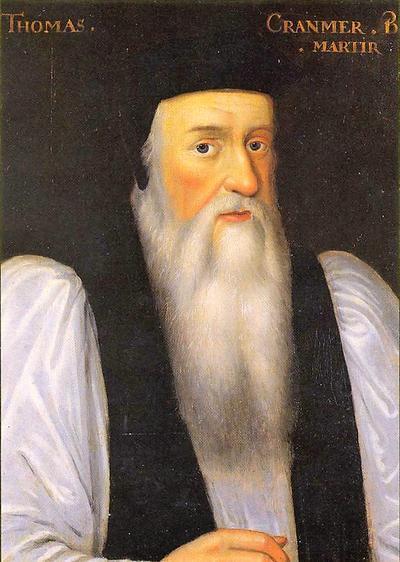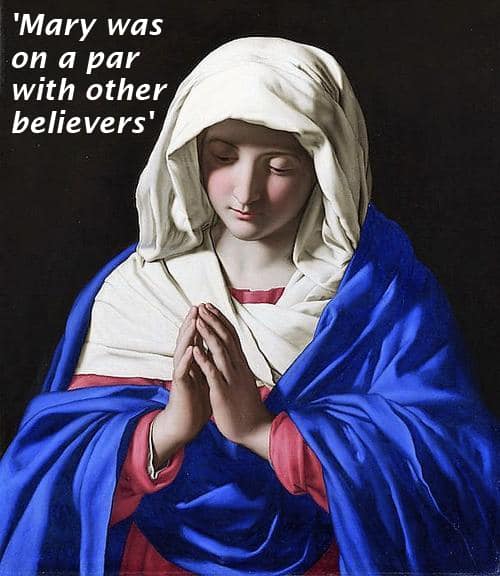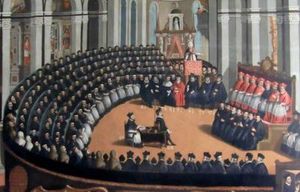The Council of Trent (1545-63) defined Rome’s response to the challenge of the Reformation. Three great problems stand out in the teachings of Trent: the doctrines of revelation and justification, and the church’s worship.
Trent’s position on each of these demonstrates why the Reformation was necessary at the time. But it is often said that Rome has now changed so much that the Reformation should be undone. Is that true? Before answering, here is a brief reminder of Trent’s teaching on the three issues.
Then: revelation, justification and worship
Revelation
The council says that the Word of God is found in two different forms, written and unwritten, received with ‘the same sense of loyalty and reverence’.1 The unwritten traditions were dictated orally by Christ or by the Spirit, and then preserved in ‘continuous succession’ through the oral teaching of the church.2
When Rome appears to teach something new, it attributes it to this unwritten tradition. When it comes to interpreting the twofold form of the Word of God, the church alone has authority.
To this position the First Vatican Council (1869-70) added the doctrine of papal infallibility. The pope is infallible when teaching ex cathedra on matters of faith and practice, even without the consent of the church. Such teachings are ‘irreformable of themselves, not because of the consent of the church’.3
Justification
Trent does not teach that we can save ourselves by our own effort; it is not Pelagian — divine grace is necessary for salvation. Nevertheless, Trent does teach that we can cooperate with God in the work of our justification, by using the free will that remains after the Fall to do good works.
In that sense, the council is semi-Pelagian. According to Trent, faith is only the beginning of justification. When we cooperate and do good works, by the power of the Holy Spirit, those works themselves grow our justification.
They can merit the reward of eternal life: ‘Nothing further is wanting to the justified for them to be regarded as having entirely fulfilled the divine law in their present condition by the works they have done in the sight of God; they can also be regarded as having truly merited eternal life, which they will obtain in due time, provided they die in the state of grace’.4

Worship
Archbishop Thomas Cranmer reflected on the activity of the people in Roman Catholic masses, rushing from altar to altar to worship the elevated host. He explained their activity on the basis of the doctrine of transubstantiation — the belief that in the mass the substance of the bread becomes the substance of Christ himself: ‘They worshipped that visible thing which they saw with their eyes and took it for very God’.5
The doctrine of transubstantiation was defined in 1215 and repeated at the Council of Trent: ‘There takes place a change of the whole substance of bread into the substance of the body of Christ our Lord and of the whole substance of wine into the substance of his blood’.6
Trent therefore takes the worship of bread and wine to be the worship of God himself: ‘All the faithful in Christ, in accordance with the perpetual custom of the Catholic Church, must venerate this most holy sacrament with the worship of latria that is due to the true God’.7
Now: in with the new?
Is Rome now simply the same as she was in the sixteenth century? She is not. Prior to the Second Vatican Council (1962–65) the pronouncements of the papacy had been increasingly vehement against Protestantism and against the secular world, but that changed at Vatican II.
While some Protestant polemics rely on the simplicity of believing that Rome cannot change, the facts of change in Rome are clear. A few examples will suffice to introduce the kind of change that has occurred in the last 60 years.
The tone of Vatican II was markedly different from the stern anathematising voice of the previous centuries. Traditionally, Rome has insisted that there is no salvation beyond her own bounds, but the opening Message of Vatican II calls ‘not only upon our brothers whom we serve as shepherds, but also upon all our brother Christians, and the rest of men of good will’.8
This kind of stance toward non-Catholics explains the booming industry in ecumenical dialogues with other churches that followed Vatican II. The positive stance extends not only to other Christians, but even to non-Christians who ‘acknowledge the Creator’, and especially to Muslims, who ‘along with us adore the one and merciful God, who on the last day will judge mankind’.9
Now: out with the old?
It is thus clear that Rome has changed in some important ways. Much of that change is for the worse. For example, the idea that Christians and Muslims worship the same one God can only undermine faith in the uniquely and necessarily triune God of the Bible.
Problems abound with other innovations, such as the boom in Roman Catholic biblical scholarship following Vatican II, much of which simply echoes the worst excesses of liberalism. Perhaps most striking is the continuing advance of the cult of Mary in the church, furthered by the affirmation of her immaculate conception (1854) and her assumption into heaven (1950).
Moreover, to say that Rome has changed in some ways is not the same as saying that she has changed in every way. We must ask: do the new elements mean that the traditional errors on revelation, justification and worship have been removed? They have not. The errors are voiced in a different tone, but they stand.
Rome still teaches the co-equality of tradition with Scripture, the infallibility of the pope, the contribution of works to justification, and the adoration of bread and wine in the mass.
Revelation
Vatican II states: ‘Both sacred tradition and sacred Scripture are to be accepted and venerated with the same sense of loyalty and reverence’.10 On the papacy it affirms the earlier teaching: ‘All this teaching about the institution, the perpetuity, the meaning, and reason for the sacred primacy of the Roman pontiff and of his infallible Magisterium, this sacred council again proposes to be firmly believed by all the faithful’.11

Justification
The 1994 Catechism, written expressly to disseminate the theology of Vatican II, reiterates the substance of Trent, frequently by direct quotation. Justification is defined as ‘not only the remission of sins, but also the sanctification and renewal of the interior man’.12 Justification itself includes sanctification.13
This sanctification can be sufficient to merit salvation: ‘Moved by the Holy Spirit and by charity, we can then merit for ourselves and for others the graces needed for our sanctification, for the increase of grace and charity, and for the attainment of eternal life’.14
Worship
The Catechism still holds that the bread and wine ‘become Christ’s Body and Blood’.15 It uses the words of Trent to say that the change is ‘fittingly and properly called transubstantiation’.16
It explains that the transubstantiated elements are worshipped with the ‘adoration’ due to God, as opposed to just the ‘devotion’ due to Mary.17 In the words of John Paul II cited in the Catechism, ‘Let our adoration never cease’.18
Conclusion
What is the comparison between Rome then and now? She has a distinctly different tone and stance toward outsiders, but they exist alongside the theology of revelation, justification, and worship that was taught at Trent and Vatican I. And that theology remains spiritually ruinous.
Since the doctrine of revelation tells us where to find the rest of our theology, error here opens the door to multiple unbiblical innovations. The error on justification fosters a trust in the believer’s own works that fatally shifts his confidence away from Christ and on to himself. The worship of the elements in the mass is, as the English Reformers who died over the issue knew, quite simply idolatrous.
Cornelius Van Til spoke of how Trent called him back with a ‘stern’ voice, whereas Vatican II speaks ‘with a soft and pleading voice’.19 A more peaceful relationship between Roman Catholics and Protestants is greatly to be appreciated, given the tragic history of bloodshed. Everyone should prefer debate to warfare. Nevertheless, amid the gentler overtones Rome remains fundamentally acquisitive of what she regards as her own.
She tells us frankly that the elements of grace that exist outside her are on the move: moving toward her, propelled by their own inner reality to re-join the Mother of all humanity, by submitting to Peter’s successor in Rome. She is simultaneously open toward others and zealous in her attempt to unify them only in herself. It is an openness and an attempt that we must still resist; still, and always.
Garry Williams is Director of the John Owen Centre at London Seminary. This article is based on a longer booklet available from the Protestant Truth Society bookshop, Why Protestant truth still matters.
References:
1 Compendium of creeds, definitions, and declarations on matters of faith and morals, ed. by Heinrich Denzinger et al., 43rd edn (San Francisco: Ignatius Press, 2012), §1501.
2 Compendium, §1501.
3 Compendium, §3074.
4 Compendium, §1546.
5 Cited in Eamon Duffy, The stripping of the altars: traditional religion in England 1400-1580 (New Haven: Yale University Press, 1992), p.98.
6 Compendium, §1642; for Lateran IV, see §802.
7 Compendium, §1643.
8 The documents of Vatican II, ed. by Walter M. Abbott, trans. by Joseph Gallagher (New York: Guild Press, America Press, Association Press, 1966), pp. 6-7.
9 Compendium, §4140.
10 Compendium, §4212.
11 Compendium, §4142.
12 Catechism of the Catholic Church (London: Geoffrey Chapman, 1994), §1989.
13 Catechism, §1995.
14 Catechism, §2010.
15 Catechism, §1333.
16 Catechism, §1376.
17 Catechism, §1378.
18 Catechism, §1380.
19 A Christian theory of knowledge (Nutley, NJ: Presbyterian and Reformed, 1969), p. 175.






